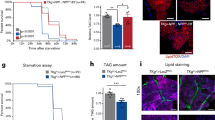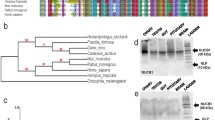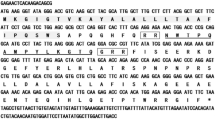Abstract
Although glucose is metabolically the most important carbohydrate in almost all living organisms, still little is known about the evolution of the hormonal control of cellular glucose uptake. In this study, we identify Phe-Met-Arg-Phe-amide (FMRFa), also known as molluscan cardioexcitatory tetrapeptide, as a glucose-lowering hormone in the snail Helix aspersa. FMRFa belongs to an evolutionarily conserved neuropeptide family and is involved in the neuron-to-muscle signal transmission in the snail digestive system. This study shows that, beyond this function, FMRFa also has glucose-lowering activity. We found neuronal transcription of genes encoding FMRFa and its receptor and moreover the hemolymph FMRFa levels were peaking at metabolically active periods of the snails. In turn, hypometabolism of the dormant periods was associated with abolished FMRFa production. In the absence of FMRFa, the midintestinal gland (“hepatopancreas”) cells were deficient in their glucose uptake, contributing to the development of glucose intolerance. Exogenous FMRFa restored the absorption of hemolymph glucose by the midintestinal gland cells and improved glucose tolerance in dormant snails. We show that FMRFa was released to the hemolymph in response to glucose challenge. FMRFa-containing nerve terminals reach the interstitial sinusoids between the chondroid cells in the artery walls. We propose that, in addition to the known sites of possible FMRFa secretion, these perivascular sinusoids serve as neurohemal organs and allow FMRFa release. This study suggests that in evolution, not only the insulin-like peptides have adopted the ability to increase cellular glucose uptake and can act as hypoglycemic hormones.






Similar content being viewed by others
References
Abolins-Krogis A (1970) Alterations in the fine structure of cytoplasmic organelles in the hepatopancreatic cells of shell-regenerating snail, Helix pomatia L. Z Zellforsch Mikrosk Anat 108:516–529
Alania M, Dyakonova V, Sakharov DA (2004a) Hyperpolarization by glucose of feeding-related neurons in snail. Acta Biol Hung 55:195–200
Alania M, Sakharov DA, Elliott CJ (2004b) Multilevel inhibition of feeding by a peptidergic pleural interneuron in the mollusc Lymnaea stagnalis. J Comp Physiol A 190:379–390
Barber A, Jordana R, Ponz F (1975) Sodium dependence of intestinal active transport of sugars in snail (Cryptomphalus hortensis Muller). Rev Esp Fisiol 31:271–275
Baud C, Darbon P, Li KW, Marchand CR (1998) Partial characterization of a novel cardioinhibitory peptide from the brain of the snail Helix aspersa. Cell Mol Neurobiol 18:413–424
Bednarova A, Kodrik D, Krishnan N (2013) Unique roles of glucagon and glucagon-like peptides: parallels in understanding the functions of adipokinetic hormones in stress responses in insects. Comp Biochem Physiol A 164:91–100
Belkin KJ, Abrams TW (1998) The effect of the neuropeptide FMRFamide on Aplysia californica siphon motoneurons involves multiple ionic currents that vary seasonally. J Exp Biol 201:2225–2234
Bishop T, Ocloo A, Brand MD (2002) Structure and function of mitochondria in hepatopancreas cells from metabolically depressed snails. Physiol Biochem Zool 75:134–144
Blumenthal S (2010) From insulin and insulin-like activity to the insulin superfamily of growth-promoting peptides: a 20th-century odyssey. Perspect Biol Med 53:491–508
Capo JA, Mandal PK, Eyyunni S, Ahearn GA (2005) 65Zn2+ transport by lobster hepato-pancreatic baso-lateral membrane vesicles. J Comp Physiol B 175:13–20
Carroll LS, Carrow GM, Calabrese RL (1986) Localization and release of FMRFamide-like immunoreactivity in the cerebral neuroendocrine system of Manduca sexta. J Exp Biol 126:1–14
Christie AE, Chapline MC, Jackson JM, Dowda JK, Hartline N, Malecha SR, Lenz PH (2011) Identification, tissue distribution and orexigenic activity of neuropeptide F (NPF) in penaeid shrimp. J Exp Biol 214:1386–1396
Chung JS, Zmora N, Katayama H, Tsutsui N (2010) Crustacean hyperglycemic hormone (CHH) neuropeptidesfamily: Functions, titer, and binding to target tissues. Gen Comp Endocrinol 166:447–454
Cottrell GA (1997) The first peptide-gated ion channel. J Exp Biol 200:2377–2386
Cura AJ, Carruthers A (2012) Role of monosaccharide transport proteins in carbohydrate assimilation, distribution, metabolism, and homeostasis. Compr Physiol 2:863–914
de Fraga LS, da Silva RS, Zancan DM (2010) Control of carbohydrate metabolism in an anoxia-tolerant nervous system. J Exp Zool A 313:539–547
Elliott CJ, Vehovszky A (2000) Comparative pharmacology of feeding in molluscs. Acta Biol Hung 51:153–163
Floyd PD, Li L, Rubakhin SS, Sweedler JV, Horn CC, Kupfermann I, Alexeeva VY, Ellis TA, Dembrow NC, Weiss KR, Vilim FS (1999) Insulin prohormone processing, distribution, and relation to metabolism in Aplysia californica. J Neurosci 19:7732–7741
Fried B, Cahn-Hidalgo D, Fujino T, Sherma J (1991) Diet-induced differences in the distribution of neutral lipids in selected organs of Biomphalaria glabrata (Gastropoda: Planorbidae) as determined by thin-layer chromatography and light and electron microscopy. Trans Am Microsc Soc 110:163–171
Gäde G (2004) Regulation of intermediary metabolism and water balance of insects by neuropeptides. Annu Rev Entomol 49:93–113
Gäde G (2009) Peptides of the adipokinetic hormone/red pigment-concentrating hormone family: a new take on biodiversity. Ann N Y Acad Sci 1163:125–136
Geary TG, Marks NJ, Maule AG, Bowman JW, Alexander-Bowman SJ, Day TA, Larsen MJ, Kubiak TM, Davis JP, Thompson DP (1999) Pharmacology of FMRFamide-related peptides in helminths. Ann N Y Acad Sci 897:212–227
Geraerts WP (1992) Neurohormonal control of growth and carbohydrate metabolism by the light green cells in Lymnaea stagnalis. Gen Comp Endocrinol 86:433–444
Geraghty RF, Williams CH, Irvine GB, Evans PD, Cottrell GA (1994) Biological activity and receptor binding properties of some analogues of pQDPFLRFamide. Peptides 15:835–841
Gerencser GA, Cattey MA, Ahearn GA (1995) Sulfate/oxalate exchange by lobster hepatopancreatic basolateral membrane vesicles. Am J Physiol 269:R572–R577
Glass CK, Olefsky JM (2012) Inflammation and lipid signaling in the etiology of insulin resistance. Cell Metab 15:635–645
Goddard KC, Martin WA (1966) Carbohydrate metabolism. In: Wilbur MK, Yonge CM (eds) Physiology of mollusca, vol 2. Academic, New York, pp 275–302
Grimmelikhuijzen CJ, Spencer AN (1984) FMRFamide immunoreactivity in the nervous system of the medusa Polyorchis penicillatus. J Comp Neurol 230:361–371
Gronke S, Clarke DF, Broughton S, Andrews TD, Partridge L (2010) Molecular evolution and functional characterization of Drosophila insulin-like peptides. PLoS Genet 6:e1000857
Haselton AT, Yin CM, Stoffolano JG (2008) FMRFamide-like immunoreactivity in the central nervous system and alimentary tract of the non-hematophagous blow fly, Phormia regina, and the hematophagous horse fly, Tabanus nigrovittatus. J Insect Sci 8:1–17
Hill SR, Orchard I (2004) The influence of diet and feeding state on FMRFamide-related peptides in the gut of Locusta migratoria L. Peptides 25:105–114
Hoekstra LA, Moroz LL, Heyland A (2012) Novel insights into the echinoderm nervous system from histaminergic and FMRFaminergic-like cells in the sea cucumber Leptosynapta clarki. PLoS ONE 7:e44220
Hopkins PM (2012) The eyes have it: a brief history of crustacean neuroendocrinology. Gen Comp Endocrinol 175:357–366
Hyun S (2013) Body size regulation and insulin-like growth factor signaling. Cell Mol Life Sci 70:2351–2365
Ierusalimsky V, Balaban P (2005) Morphological basis for coordination of growth and reproduction processes in the CNS of two terrestrial snails. Exp Brain Res 161:465–473
Kits KS, Bobeldijk RC, Crest M, Lodder JC (1991) Glucose-induced excitation in molluscan central neurons producing insulin-related peptides. Pflugers Arch 417:597–604
Lehman HK, Price DA (1987) Localization of FMRFamide-like peptides in the snail Helix aspersa. J Exp Biol 131:37–53
Linneweber GA, Jacobson J, Busch KE, Hudry B, Christov CP, Dormann D, Yuan M, Otani T, Knust E, de Bono M, Miguel-Aliaga I (2014) Neuronal control of metabolism through nutrient-dependent modulation of tracheal branching. Cell 156:69–83
Lopez-Vera E, Aguilar MB, Heimer de la Cotera EP (2008) FMRFamide and related peptides in the phylum mollusca. Peptides 29:310–317
Luchtel D, Martin A, Deyrup-Olsen I, Boer H (1997) Gastropoda: Pulmonata. In: Harrison F, Kohn A (eds) Microscopic anatomy of invertebrates, vol 6B. Wiley-Liss, New York, pp 459–718
Macdonald M, Lutz EM, Lesser W, Cottrell GA, Sommerville J (1994) Expression of mRNA encoding FMRFamide-related peptides (FaRPs) in the nervous system of Helix aspersa. Mol Cell Neurosci 5:23–34
Martins TL, Chitto AL, Rossetti CL, Brondani CK, Kucharski LC, Da Silva RS (2011) Effects of hypo- or hyperosmotic stress on lipid synthesis and gluconeogenic activity in tissues of the crab Neohelice granulata. Comp Biochem Physiol A 158:400–405
Meister B (2007) Neurotransmitters in key neurons of the hypothalamus that regulate feeding behavior and body weight. Physiol Behav 92:263–271
Merte J, Nichols R (2002) Drosophila melanogaster FMRFamide-containing peptides: redundant or diverse functions? Peptides 23:209–220
Mizrahi T, Heller J, Goldenberg S, Arad Z (2010) Heat shock proteins and resistance to desiccation in congeneric land snails. Cell Stress Chaperones 15:351–363
Murakami J, Okada R, Fujito Y, Sakakibara M, Lukowiak K, Ito E (2013a) Paired pulse ratio analysis of insulin-induced synaptic plasticity in the snail brain. J Exp Biol 216:1771–1773
Murakami J, Okada R, Sadamoto H, Kobayashi S, Mita K, Sakamoto Y, Yamagishi M, Hatakeyama D, Otsuka E, Okuta A, Sunada H, Takigami S, Sakakibara M, Fujito Y, Awaji M, Moriyama S, Lukowiak K, Ito E (2013b) Involvement of insulin-like peptide in long-term synaptic plasticity and long-term memory of the pond snail Lymnaea stagnalis. J Neurosci 33:371–383
Nässel DR, Kubrak OI, Liu Y, Luo J, Lushchak OV (2013) Factors that regulate insulin producing cells and their output in. Front Physiol 4:252
Nowakowska A, Caputa M, Rogalska J (2006) Seasonal changes in cryoprotectants concentrations in Helix pomatia snails. J Physiol Pharmacol 57(Suppl 8):93–105
Obi IE, Sterling KM, Ahearn GA (2013) K(+)-dependent (3)H-D-glucose transport by hepatopancreatic brush border membrane vesicles of a marine shrimp. J Comp Physiol B 183:61–69
Osborn O, Olefsky JM (2012) The cellular and signaling networks linking the immune system and metabolism in disease. Nat Med 18:363–374
Pedder SM, Walker RJ (1999) The actions of FxRFamide related neuropeptides on identified neurones from the snail, Helix aspersa. Acta Biol Hung 50:185–198
Price DA, Doble KE, Lesser W, Greenberg MJ, Swiderek KM, Lee TD, Lutz EM, Sommerville J, Falconer S, Cottrell GA (1996) The peptide pQFYRFamide is encoded on the FMRFamide precursor of the snail Helix aspersa but does not activate the FMRFamide-gated sodium current. Biol Bull 191:341–352
Ramnanan CJ, Storey KB (2006) Glucose-6-phosphate dehydrogenase regulation during hypometabolism. Biochem Biophys Res Commun 339:7–16
Robert JJ, Orosco M, Rouch C, Jacquot C, Cohen Y (1989) Unexpected responses of the obese “cafeteria” rat to the peptide FMRF-amide. Pharmacol Biochem Behav 34:341–344
Rosenbaum RM, Ditzion B (1963) Enzymic histochemistry of granular components in digestive gland cells of the roman snail, Helix pomatia. Biol Bull 124:211–224
Rőszer T, Bánfalvi G (2012) FMRFamide-related peptides: anti-opiate transmitters acting in apoptosis. Peptides 34:177–185
Rőszer T, Jenei Z, Gall T, Nagy O, Czimmerer Z, Serfozo Z, Elekes K, Bánfalvi G (2004) A possible stimulatory effect of FMRFamide on neural nitric oxide production in the central nervous system of Helix lucorum L. Brain Behav Evol 63:23–33
Rőszer T, Kappelmayer J, Nagy GG, Szentmiklosi AJ, Basnakian AG, Banfalvi G (2006a) The neuropeptide FMRFamide can protect cells against apoptosis in the snail digestive gland. Apoptosis 11:173–182
Rőszer T, Kiss-Tóth É, Petkó M, Szentmiklósi AJ, Bánfalvi G (2006b) Phe-met-arg-phe (FMRF)-amide is a substrate source of NO synthase in the gastropod nervous system. Cell Tissue Res 325:567–575
Shevelkin AV (1994) Facilitation of defense reactions during the consumption of food in snails: the participation of glucose and gastrin/cholecystokinin-like peptide. Neurosci Behav Physiol 24:115–124
Shevelkin AV, Bratyshev PI (1990) Oligopeptides in the regulation of feeding and avoidance behaviour in the land snail (Helix lucorum). Biomed Sci 1:73–76
Shpakov AO, Kuznetsova LA, Plesneva SA, Pertseva MN (2008) Variations in functional activity of the hormone-sensitive adenylate cyclase system in tissues of gastropod mollusks with streptozotocin-induced diabetes. Bull Exp Biol Med 146:424–428
Sorenson RL, Sasek CA, Elde RP (1984) Phe-met-arg-phe-amide (FMRF-NH2) inhibits insulin and somatostatin secretion and anti-FMRF-NH2 sera detects pancreatic polypeptide cells in the rat islet. Peptides 5:777–782
Sterling KM, Ahearn GA (2011) Glucose and fructose uptake by Limulus polyphemus hepatopancreatic brush border and basolateral membrane vesicles: evidence for Na + -dependent sugar transport activity. J Comp Physiol B 181:467–475
Sumner AT (1965) The cytology and histochemistry of the digestive gland cells of Helix. Q J Microsc Sci 106:173–192
Towle DW, Rushton ME, Heidysch D, Magnani JJ, Rose MJ, Amstutz A, Jordan MK, Shearer DW, Wu WS (1997) Sodium/proton antiporter in the euryhaline crab Carcinus maenas: molecular cloning, expression and tissue distribution. J Exp Biol 200:1003–1014
Tsatsoulis A, Mantzaris MD, Bellou S, Andrikoula M (2013) Insulin resistance: an adaptive mechanism becomes maladaptive in the current environment - an evolutionary perspective. Metabolism 62:622–633
van Tol-Steye H, Lodder JC, Mansvelder HD, Planta RJ, van Heerikhuizen H, Kits KS (1999) Roles of G-protein beta gamma, arachidonic acid, and phosphorylation inconvergent activation of an S-like potassium conductance by dopamine, Ala-Pro-Gly-Trp-NH2, and Phe-Met-Arg-Phe-NH2. J Neurosci 19:3739–3751
Wang G, Song G, Becker W (1992) [14C]-glucose metabolism of Oncomelania snails. Chin Med Sci J 7:148–151
Willoughby D, Yeoman MS, Benjamin PR (1999) Cyclic AMP is involved in cardioregulation by multiple neuropeptides encoded on the FMRFamide gene. J Exp Biol 202:2595–2607
Zou C, Wang Y, Shen Z (2005) 2-NBDG as a fluorescent indicator for direct glucose uptake measurement. J Biochem Biophys Methods 64:207–215
Acknowledgments
This study was performed at the former Department of Animal Anatomy and Physiology, presently a joint department of the Institute of Biology, Debrecen University, Hungary. Figure 1b was provided with courtesy of Dreamstime Stock Photography. Livia I. Lelkes provided editorial assistance; her timely and careful work is appreciated. This article is dedicated to the memory of Dr. Vince Varga, Professor of Animal Physiology at Debrecen University (Hungary) and University of Tampere (Finland).
Author information
Authors and Affiliations
Corresponding author
Electronic supplementary material
Below is the link to the electronic supplementary material.
ESM 1
(PDF 486 kb)
Rights and permissions
About this article
Cite this article
Rőszer, T., Kiss-Tóth, É.D. FMRF-amide is a glucose-lowering hormone in the snail Helix aspersa . Cell Tissue Res 358, 371–383 (2014). https://doi.org/10.1007/s00441-014-1966-x
Received:
Accepted:
Published:
Issue Date:
DOI: https://doi.org/10.1007/s00441-014-1966-x




